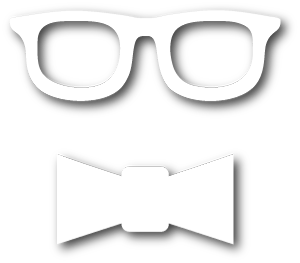Just to get this out of the way quickly…yes, I am a ‘nerd.’ Besides my passion for film and film scores, I also love science fiction, read comics, and play bassoon. Okay, with that said, let’s move on.
One of the most anticipated films of 2009 is Zack Snyder’s adaptation of Alan Moore’s and Dave Gibbons’ 1986 mini-series/graphic novel Watchmen. So far, two trailers for the film have been released, the first was debuted in front of The Dark Knight in July, and the second being paired with Quantum of Solace in November. These two trailers share much of the same footage, though the second has more dialogue over many of the images. What really stands out to me, though, is how skillfully the two trailers use music, though for many musical reasons, I prefer the original trailer to the second.
If you haven’t seen the trailers, surf over to watchmenmovie.com or youtube.com to view them.
The first trailer features the song “The Beginning is the End is the Beginning” by the Smashing Pumpkins and was part of the soundtrack album from Joel Schumacher’s Batman & Robin (1997), a film best left forgotten. I do not remember if the song was actually in the film, though its companion song “The End is the Beginning is the End,” which is very similar lyrically, melodically, and harmonically, was used in the end credits of the film. “The Beginning…” has a much darker timbre than “The End…,” with lower pitched instruments dominating its accompaniment, as opposed to the high keyboard and guitar driven “The End…” Furthermore, while the harmonic rhythm is the same in both songs, the pulse feels quicker in “The End…” due to the drum part, while “The Beginning…” has a slower pulse that is given by a low pitched, throbbing sound.
In the trailer, the song and its lyrics are cut together to emphasis certain images on screen, one such example being when we first see the the Silk Specter set with the lyric “The pale princess of a palace cracked.” But what is more remarkable about the trailer and its music is how seamlessly the song is cut up. If we use the lyrics as a guide, we see that the song jumps from the first verse, to the second verse, back to the first, and then to the chorus:
“Send a heartbeat to/The Void that cries through you” – Verse 1
“The pale princess of a palace cracked/And now the kingdom comes” – Verse 2
“The world is lost and blown/And we are flesh and blood disintegrate” – Verse 1
“And in your darkest hour/Now all secrets fade/We can watch the world devoured in its pain” – Chorus (last three lines)
After that, the music drops out as we hear a voice say “God help us all,” after which the song comes back in, but with the instrumental section that closes the song.
Another facet of the trailer is how there are sync points in which effects have been inserted into the song that blend into the sound of it that further enhance the song’s connection with the images. Sync points such as when the Owl ship rises from the river, the flag being pulled taut at the funeral. Everything has been cut together to form a seamless whole.
The second trailer, on the other hand, is not so skillful. The cutting of the music is much more noticeable and draws attention to itself. The trailer uses two separate sources of music, the first are selections from Philip Glass’s score for Godfrey Reggio’s Koyaanisqatsi (1982), and the second is the song “Take a Bow” off of Muse’s 2006 album Black Holes and Revelations. The linkage between the two sources are Muse’s clear influence from Glass’s use of “repetitive structures” (Glass never liked the term ‘minimalism’), as the organ part from Koyaanisqatis segues into the synth/organ part from “Take a Bow.”
Trailer 2 is obviously meant to showcase more of the story and action elements of the film, starting with the slower paced Glass music and building up to the more frenetic Muse song, which itself is cut to quickly arrive and its faster paced ending. What I feel, though, is a very poor cut is how they arrive at the line “And you will burn in hell.” Even in my first viewing of the trailer, this cut was quite obvious because musically the shift is jarring. But they needed to move the music along to get to the more energetic guitar section towards the end that leads, again, to the line “And you will burn in hell,” to which the images of explosions and a mushroom cloud are shown.
From the standpoint of the trailer, we can see the reasons why the choices were made, but they are just not as well crafted as in the first trailer. Plus, I prefer the darker tone of the first trailer, I feel it captures part of what is so great about the source material. Additionally, the sync of the lyrics and images in it are much stronger, I feel. Not only the “pale princess” with the slow walk of the Silk Specter, but also “kingdom come” with Adrian Veidt’s Ozymandias, and in the background are TV sets showing the image of Richard Nixon. In the story, both characters see themselves as self-styled rulers of the world (the name Ozymandias is another name of the Egyptian pharaoh Ramessess the Great, one of the longest living pharaohs, and also one that built many monuments to himself during his reign).
Granted these are things that one might only catch if they know both music and story, but it is almost surely what the editor of the trailer had in mind when cutting together both audio and video.
In the end, I guess the whole point is maybe to state that trailers are, if they are well done, in effect short films, with carefully constructed audio-visual sync points that are, of course, designed to grab audience members when the film is released. And while you cannot judge a movie by its trailer, you can make some educated guesses as to its quality.






